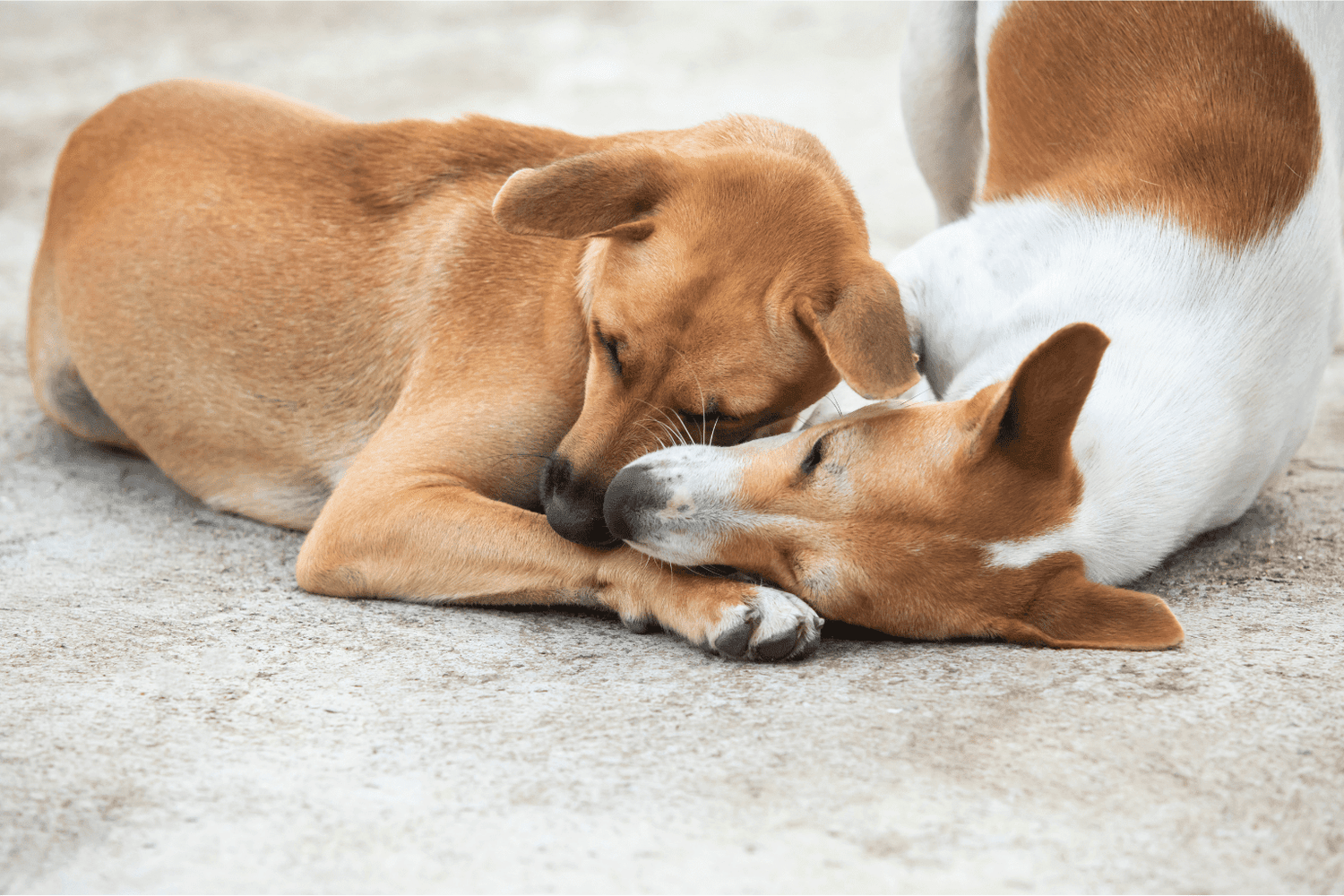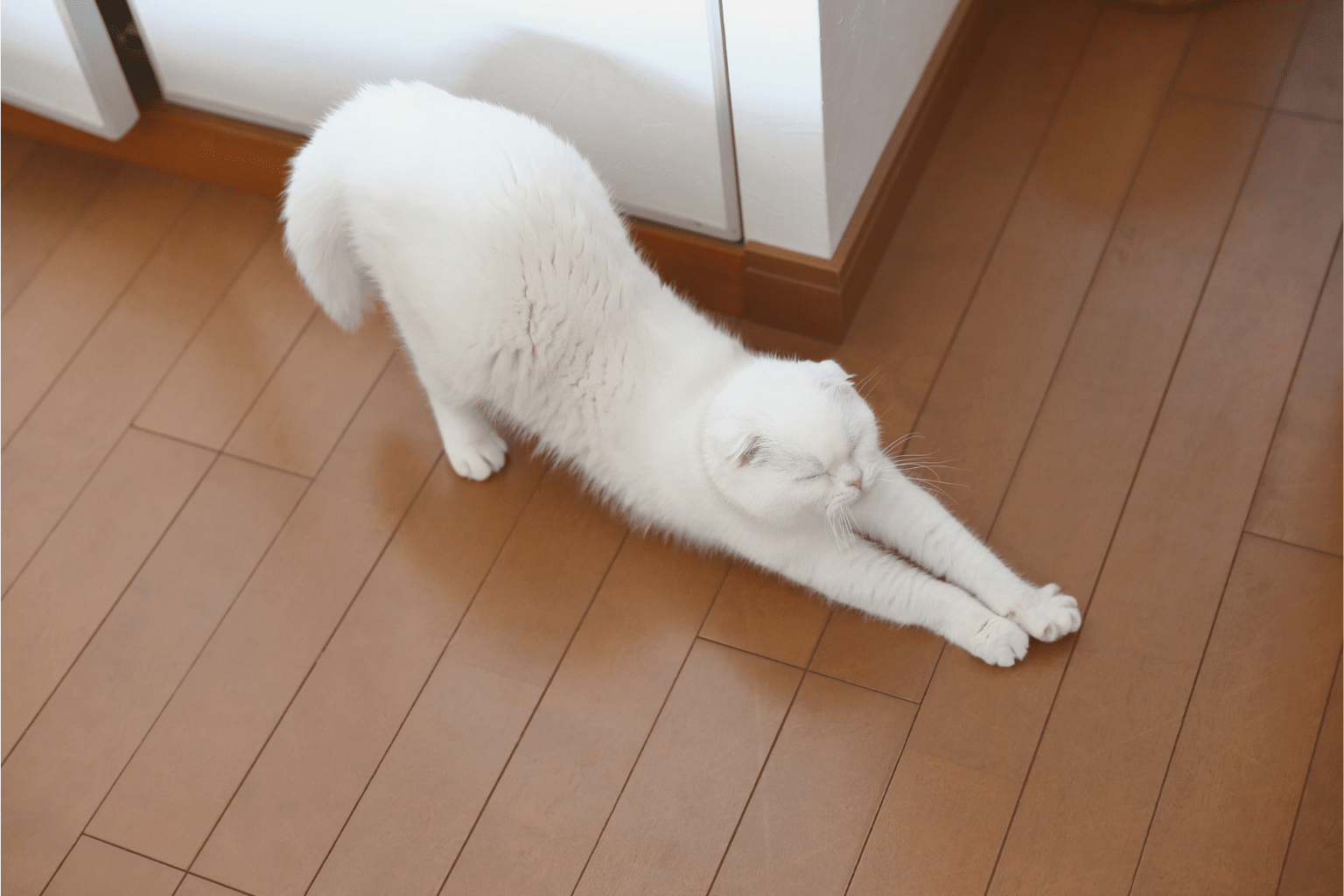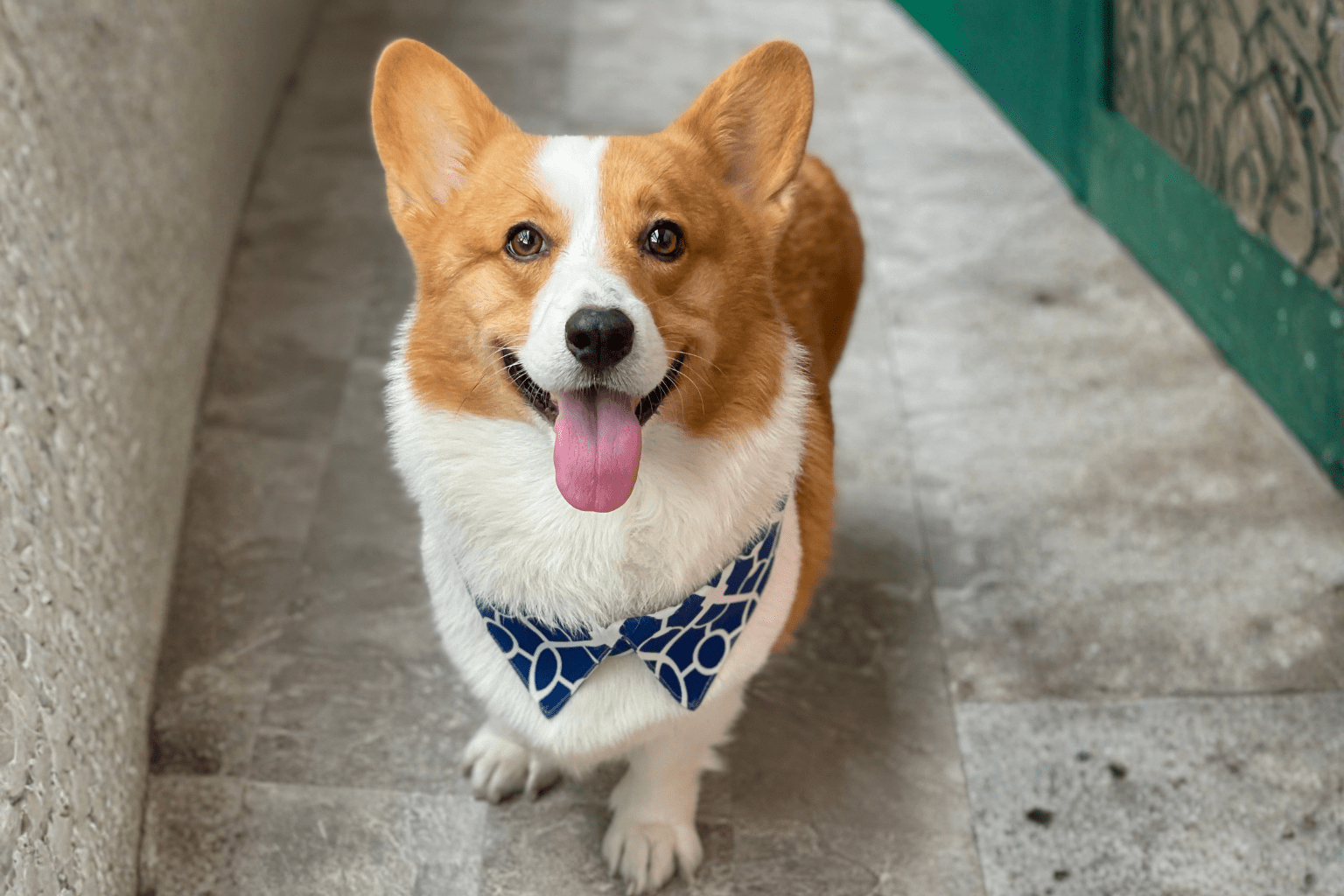Key Takeaways
- Dogs' sleeping positions provide valuable insights into their emotional state and physical comfort.
- Observing how your dog sleeps can help you understand their overall well-being.
- Different sleep poses act as a silent language indicating whether a dog feels safe or stressed.
- A dog sleeping belly-up with paws in the air often reflects a sense of security and relaxation.
Table of Contents
- Your Dog's Sleeping Positions, More Than Just Cute Poses
- Decoding the Most Common Dog Sleeping Positions
- Sleeping on Cold Surfaces, Temperature Regulation
- Why Dogs Choose These Positions, What Science & Stories Say
- How to Support Your Dog's Favorite Sleeping Styles, Practical Tips
- Sleeping Position Showdown, Comparing What Each Pose Tells Us
- Sleep Problems & Troubleshooting, When Position Signals a Problem
- Building a Restful Routine, Promoting Healthy Sleep Habits
Your Dog's Sleeping Positions, More Than Just Cute Poses
When you catch your pup sprawled belly-up with paws in the air, you're witnessing more than an adorable photo opportunity. Dogs positions during sleep reveal fascinating insights about their emotional state, physical comfort, and overall well-being. These natural poses serve as a silent language, telling us whether our furry family members feel safe, stressed, or somewhere in between.
Most dogs sleep 12-18 hours daily, with puppies and seniors clocking up to 20 hours. During this substantial downtime, their chosen sleeping positions meaning extends far beyond comfort, it's a window into their trust levels, temperature regulation needs, and even potential health concerns. A dog who suddenly shifts from sprawling freely to curling tightly might be signaling discomfort, while a rescue who progresses from guarded poses to relaxed stretches is showing beautiful signs of settling into their forever home.
Understanding these silent communications helps us create better sleeping environments, spot early wellness changes, and strengthen the bond with our four-legged family members. Whether you're "Wellness Wendy" tracking daily habits or "Golden-Years Gary" ensuring your senior pup's comfort, reading these natural cues transforms ordinary naptime observations into valuable health insights.
Decoding the Most Common Dog Sleeping Positions

Every dog develops signature sleeping styles that reflect their personality, comfort level, and physical needs. Dogs positions range from completely vulnerable displays of trust to protective stances that keep them ready for action. Recognizing these patterns helps pet parents understand their dog's emotional state and catch potential health changes early.
For more on how joint issues can affect your dog's comfort and sleep, read about hip dysplasia in dogs, including signs and treatments.
The Side Sleeper, Ultimate Relaxation Mode
What it looks like: Your dog lies on their side with limbs extended, belly partially exposed, looking completely at ease. This position allows maximum muscle relaxation while maintaining some alertness to surroundings.
What it means: Deep trust, comfort, and often temperature regulation. Dogs who sleep this way feel genuinely secure in their environment. Senior dogs frequently favor this pose because it relieves pressure on joints while supporting natural spine alignment. Best for: Dogs of all ages, especially those needing joint support or cooling down after active periods.
The Donut, Seeking Security and Warmth
What it looks like: Tightly curled with nose tucked near tail, legs pulled close to body, creating a compact ball shape that conserves maximum body heat and protects vital organs.
What it means: Your dog is prioritizing warmth and security. This instinctive position protects vulnerable areas while maintaining body temperature. Watch for changes: If your typically sprawling dog suddenly adopts this pose consistently, check for illness, new stressors, or temperature drops. Many rescue dogs start here before gradually opening up to more vulnerable positions as trust builds.
The Belly-Up, Complete Trust Display
What it looks like: Lying on back with paws flopped upward, full belly exposed to the world, the most vulnerable position possible for any animal.
What it means: Absolute security and often heat relief. Only dogs who feel completely safe will expose their most vulnerable areas this way. This position also maximizes cooling by exposing the less-furry belly to air circulation. Age consideration: Senior dogs might do this less frequently due to spine discomfort or difficulty getting back up, which isn't necessarily concerning but worth noting for comfort adjustments.
The Superman, Ready for Action
What it looks like: Belly flat against the ground, front paws stretched forward, back legs extended straight behind, resembling the classic superhero flying pose.
What it means: Playful energy and readiness to spring into action. This position allows for quick transitions from rest to play, making it popular among puppies and high-energy breeds. Dogs often choose this pose on cool surfaces after exercise or during midday rest when they're not quite ready for deep sleep.
The Lion Pose, Gentle Guardian Mode
What it looks like: Belly down with head resting on front paws, hind legs tucked underneath, similar to the classic sphinx or lion statue pose.
What it means: Light sleep while maintaining watchfulness. Dogs in this position can quickly lift their heads and assess their surroundings. Common in new environments, when protecting family members, or during the adjustment period after bringing home a new baby or pet. This isn't anxiety, it's caring vigilance.
Head and Neck Raised, Breathing Easier
What it looks like: Sleeping with head propped on furniture edges, pillows, or raised surfaces rather than lying flat.
What it means: Often indicates a need for easier breathing. Brachycephalic breeds (bulldogs, pugs, Boston terriers) naturally sleep this way due to their facial structure. When to watch: If this becomes a sudden new habit, especially with coughing or labored breathing, it may signal respiratory concerns that warrant veterinary evaluation.
Sleeping on Cold Surfaces, Temperature Regulation
When you find your dog sprawled across bathroom tiles or stretched out on the kitchen floor, they're likely regulating their body temperature. Dogs positions on cold surfaces indicate they're seeking relief from heat or possibly running a low fever. This behavior is completely normal during warm weather or after exercise.
Double-coated breeds like Golden Retrievers and German Shepherds gravitate toward cool surfaces more frequently than thin-coated dogs. When to monitor: If your dog suddenly starts avoiding their usual bed for cold floors, check for signs of fever, excessive panting, or lethargy that might indicate illness.
The Burrower, Seeking Security and Warmth
Dogs who tunnel under blankets, burrow into laundry piles, or create caves in their bedding are seeking deep security and warmth. This position is especially common among terriers, Dachshunds, and Chihuahuas, breeds originally bred for underground work or small enough to appreciate extra insulation.
What it reveals: Burrowing dogs often have strong den instincts and may feel more secure in enclosed spaces. This behavior can increase during stressful periods, cold weather, or when dogs need emotional comfort. Supporting burrowers: Provide cave-style beds or blankets specifically for tunneling to satisfy this natural instinct safely.
Why Dogs Choose These Positions, What Science & Stories Say
Your dog's sleeping position reflects a complex interplay of emotional state, physical comfort, and environmental factors. Research shows that dogs spend 12-14 hours daily sleeping, with position choices driven by their need for security, temperature regulation, and pain avoidance. Dogs positions serve as a window into their overall wellbeing.
Emotional drivers play a significant role in sleep posture selection. Dogs feeling secure and content typically sleep in more vulnerable positions like belly-up or side-sleeping. Anxious or uncertain dogs prefer protective positions like the donut curl or lion pose, where they can quickly spring into action if needed.
Physical factors equally influence sleep choices. Senior dogs with arthritis often avoid positions that put pressure on sore joints, while overheated dogs seek cooling surfaces and stretched-out poses. Brachycephalic breeds naturally sleep with elevated heads to ease breathing, while deep-chested breeds may avoid certain positions that could contribute to bloat risk.
Age and Health Indicators
Puppies frequently sleep in tight curls for warmth and security, gradually transitioning to more relaxed positions as they mature. Senior dogs may shift from sprawling positions to more supported poses as joint comfort becomes priority. Sudden changes in established sleep patterns often signal the need for veterinary evaluation.
Environmental adaptation also shapes sleep behavior. Dogs adjust their positions based on room temperature, family activity levels, and perceived safety. Multi-pet households often see dogs sleeping in contact positions for social comfort, while only-dogs may prefer human proximity or independent sleeping areas.
To learn more about how dogs communicate their feelings and needs, explore whether dogs are more than just pets.
How to Support Your Dog's Favorite Sleeping Styles, Practical Tips

Creating the optimal sleep environment starts with understanding your dog's preferred position and providing appropriate support. Side sleepers benefit from orthopedic beds with memory foam that cushions joints and maintains spinal alignment. These dogs need adequate space to stretch fully without falling off their sleeping surface.
Donut sleepers thrive with bolster beds or raised-edge designs that provide the security of enclosed sides. For anxious dogs who curl tightly, consider adding calming elements to their sleep routine. Natural support through gentle homeopathic remedies can help ease the stress that drives excessive curling behavior.
Belly-up sleepers require stable, supportive surfaces that won't shift when they roll over. Avoid beds that are too soft, as they can make it difficult for dogs to change positions comfortably. These confident sleepers also benefit from consistent room temperatures since they're exposing their most vulnerable areas.
Superman sleepers need durable beds that can withstand active movement and provide cushioning for extended belly contact. Non-slip mats underneath prevent sliding, while washable covers accommodate these often-playful dogs who may bring outdoor adventures to their sleep space.
Multi-dog households present unique challenges when different sleep styles coexist. Provide various bed options throughout your home so each dog can choose their preferred setup. Some dogs prefer sharing space while others need individual sleeping areas to feel secure.
Room setup considerations include maintaining consistent temperature, minimizing disruptive noise, and ensuring easy access to water. Position beds away from high-traffic areas for deep sleepers, while anxious dogs may prefer locations where they can monitor family activity.
Sleeping Position Showdown, Comparing What Each Pose Tells Us
Understanding the nuanced differences between dogs positions helps you decode your pet's physical and emotional state. Each position offers distinct insights into comfort level, security needs, and potential health considerations.
For a scientific perspective on dog behavior and sleep, see this study on canine sleep and behavior.
| Position | Security Level | Vulnerability | Temperature Need | Health Signals | Best For |
|---|---|---|---|---|---|
| Side Sleeper | High confidence | Moderate exposure | Neutral to cool | Joint comfort | All ages |
| Donut Curl | Maximum protection | Minimal exposure | Warmth seeking | Stress or cold | Anxious/cold dogs |
| Belly-Up | Complete trust | Maximum exposure | Heat relief | Confidence/cooling | Secure dogs |
| Superman | Alert readiness | Moderate exposure | Cool surface | Active energy | Playful dogs |
| Lion Pose | Watchful rest | Protected core | Neutral | Light sleep | Guardian breeds |
Sleep Problems & Troubleshooting, When Position Signals a Problem
Sudden changes in established sleep patterns often indicate underlying issues requiring attention. When your dog abandons their usual dogs positions for dramatically different poses, consider both physical and environmental factors that might be driving the change.
Physical discomfort signs include dogs who previously slept sprawled now curling tightly, or former belly-up sleepers avoiding back positions entirely. These shifts may indicate joint pain, digestive issues, or respiratory problems. Dogs experiencing pain often seek positions that minimize pressure on affected areas.
Environmental stressors can trigger position changes even when physical health remains stable. New family members, moved furniture, changed work schedules, or seasonal temperature fluctuations all influence sleep behavior. Anxious dogs may revert to more protective positions during stressful periods.
When to Seek Professional Help
Immediate veterinary attention is warranted when position changes accompany labored breathing, excessive panting, inability to settle, or signs of pain when moving. Monitor closely when gradual changes occur alongside appetite loss, lethargy, or behavioral shifts.
Restlessness indicators include dogs who cycle through multiple positions without settling, pace before lying down, or frequently wake and reposition. This behavior may signal pain, anxiety, or medical conditions affecting comfort levels.
For more information on joint health after surgery, read these hip and joint surgery after care tips for dogs and cats.
Natural support options can help address mild anxiety or discomfort that disrupts sleep patterns. Gentle homeopathic remedies support the body's natural healing processes without causing drowsiness or dependency, allowing dogs to find their optimal rest naturally.
Building a Restful Routine, Promoting Healthy Sleep Habits

Creating consistent sleep routines helps dogs feel secure and promotes restorative rest regardless of their preferred dogs positions. Successful sleep habits combine environmental consistency, appropriate physical support, and gentle calming practices.
Bedtime consistency matters more than specific timing. Dogs thrive on predictable routines that signal rest time approaching. This might include dimming lights, playing soft music, or moving to designated sleep areas at regular intervals.
Physical preparation involves ensuring adequate exercise earlier in the day without overstimulation near bedtime. A calm walk or gentle play session helps dogs expend energy appropriately, making them more likely to settle into comfortable positions naturally.
For ideas on keeping your dog active indoors, discover how to exercise dogs indoors.
Environmental optimization includes maintaining comfortable room temperatures, minimizing disruptive noises, and providing appropriate bedding for each dog's needs. Multiple sleeping options throughout the home allow dogs to choose based on their current comfort requirements.
Natural calming support through homeopathic pellets can ease the transition to rest for anxious or overstimulated dogs. These gentle remedies support the body's natural relaxation processes without creating dependency or interfering with natural sleep cycles.
Gradual transitions work best when introducing new sleep arrangements or addressing problematic patterns. Allow dogs time to adjust to changes while maintaining other routine elements they find comforting.
Multi-pet considerations require balancing individual needs with group dynamics. Some dogs sleep better with companions while others need private space. Observing natural preferences helps create arrangements that work for all household members.
For further reading on dog behavior, visit the Dog behaviour page on Wikipedia.
Not a substitute for professional veterinary advice.
Frequently Asked Questions
What do different dog sleeping positions reveal about their emotional state and sense of security?
Different sleeping positions act as a silent language showing how your dog feels. For example, a dog sleeping belly-up with paws in the air usually feels safe and relaxed, while curling up can indicate a need for security or warmth. These poses help us understand if our pets are comfortable or feeling a bit stressed.
How can observing my dog's sleeping posture help me identify potential health or comfort issues?
Changes in your dog's usual sleeping position may signal discomfort or pain. For instance, a dog that normally stretches out but starts curling tightly might be feeling unwell. Watching these shifts helps you spot early signs of joint stiffness or other issues, so you can support their well-being promptly.
Why do dogs choose certain sleeping positions like curling up or sleeping belly-up, and what do these positions indicate about temperature regulation?
Dogs curl up to conserve body heat and feel protected, especially in cooler environments. Sleeping belly-up exposes their tummy, which helps them cool down and shows they feel secure. These positions reflect how dogs naturally adjust to temperature and their comfort needs.
What practical steps can I take to support my dog's preferred sleeping styles and promote healthy sleep habits?
Create a cozy, quiet space that suits your dog's favorite sleeping poses, whether that’s a soft bed for curling up or a cool spot for stretching out. Keep their bedding clean and consider natural supplements that support joint comfort and relaxation. Consistent routines and gentle care help your dog rest well and feel safe every night.



